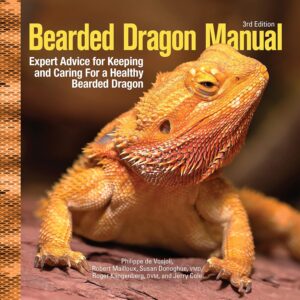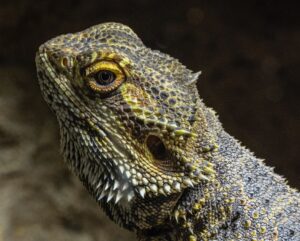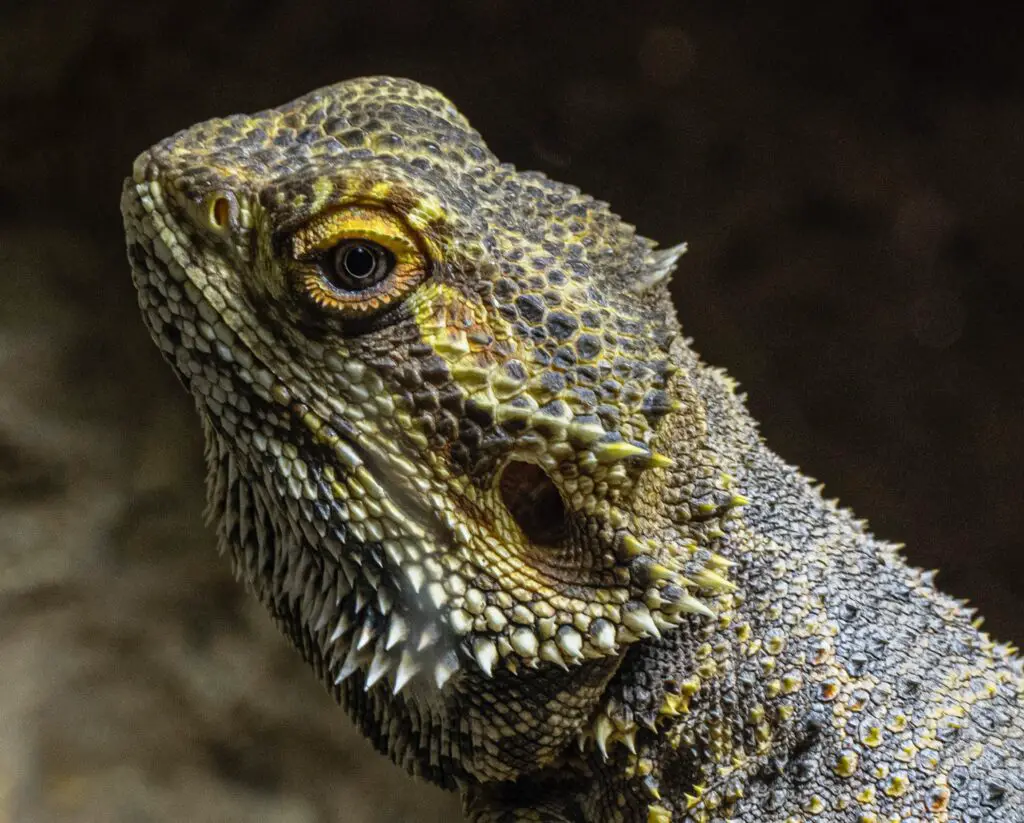How to tell if a bearded dragon is male or female
How to tell if a bearded dragon is male or female: Bearded dragons, scientifically known as Pogona vitticeps, have gained immense popularity as captivating reptile pets in recent years. These charming creatures originate from arid regions of Australia and are loved for their docile nature, unique appearance, and relatively low maintenance requirements. Bearded dragons make ideal companions for reptile enthusiasts of all ages, from beginners to experienced keepers.
Brief Overview of Bearded Dragons as Popular Reptile Pets
 Bearded dragons have captured the hearts of many due to their striking physical features and fascinating behaviors. These diurnal lizards typically grow up to 18-22 inches in length, with some exceptional individuals reaching up to 24 inches. Their most distinctive characteristic is the beard-like spiny projection located under their chin that can change color depending on mood or temperature.
Bearded dragons have captured the hearts of many due to their striking physical features and fascinating behaviors. These diurnal lizards typically grow up to 18-22 inches in length, with some exceptional individuals reaching up to 24 inches. Their most distinctive characteristic is the beard-like spiny projection located under their chin that can change color depending on mood or temperature.
In terms of coloration, bearded dragons exhibit a wide range of hues and patterns. The most common varieties include sandy brown with patches of yellow or orange undertones, but some display vibrant reds or even hypomelanistic forms with reduced pigmentation.
These reptiles have a gentle temperament that allows them to be easily handled once they become familiar with their owners. They are known for being interactive and curious creatures that enjoy exploring their surroundings both indoors in captivity and outdoors during supervised outings.
Importance of Determining the Gender of a Bearded Dragon for Various Reasons
Accurately identifying the gender of a bearded dragon is crucial for several reasons, especially for responsible pet ownership and understanding your dragon’s unique needs. One significant motive is providing appropriate care throughout the animal’s life cycle.
Males and females may require different diets and environmental conditions depending on factors such as reproductive behavior or territorial tendencies. Moreover, determining the gender becomes pivotal when considering breeding projects or if you wish to avoid unintentional cross-breeding in a multi-species enclosure.
The ability to differentiate between males and females is particularly important for breeders interested in conserving specific morphs or participating in breeding programs to maintain genetic diversity among captive populations. Understanding the gender of your bearded dragon also allows you to establish a more personalized bond with your pet.
Knowing their sex can influence their behavior, as males tend to exhibit certain territorial traits or dominance behaviors that may require additional attention or training. Conversely, understanding the natural tendencies of female dragons will help you provide them with optimal conditions during periods of reproductive activity or egg-laying.
Acquiring knowledge about the gender of your bearded dragon is fundamental when it comes to their care, breeding possibilities, and establishing a strong human-animal bond. In the subsequent sections, we will delve into specific characteristics and methods that can aid in determining whether your bearded dragon is male or female.
General Characteristics
A Matter of Size: Males vs Females
When it comes to determining the gender of a bearded dragon, size plays a significant role. Males tend to be larger in size, with a more robust build that can catch your attention at first glance. These magnificent creatures can reach an average length of 18 to 24 inches from snout to tail tip.
However, it’s important to note that there can be variations in size depending on the specific species and individual genetics. In contrast, females are usually smaller and have a slimmer physique compared to their male counterparts.
While their average length ranges between 16 and 20 inches, some female dragons may grow slightly longer or shorter. It’s worth mentioning that while male bearded dragons generally have a larger overall size, this alone is not enough for conclusive gender identification.
Distinctive Body Shape
 Apart from the difference in size, males and females also have distinct body shapes that can help discern their gender. Male dragons exhibit a more robust body structure with broader shoulders and necks compared to their female counterparts.
Apart from the difference in size, males and females also have distinct body shapes that can help discern their gender. Male dragons exhibit a more robust body structure with broader shoulders and necks compared to their female counterparts.
This sturdier frame is often attributed to the presence of reproductive organs unique to males. On the other hand, female bearded dragons possess a slimmer physique with narrower shoulders and necks.
Their bodies tend to appear sleeker due to the absence of certain reproductive features found in males. Understanding these subtle variations in body shape is essential when trying to determine the gender of your beloved reptilian companion.
An Array of Colors and Patterns: How to Tell if a Bearded Dragon is Male or Female
In addition to differences in size and body shape, male and female bearded dragons may display variations in coloration and patterns on their scales. While these differences are not definitive indicators of gender, they can provide additional cues for identification purposes. Male bearded dragons often exhibit more vibrant colorations on their bodies, particularly during the breeding season.
Their scales may showcase hues of red, orange, and yellow, which intensify during courtship displays. Conversely, females tend to have more subdued colors such as shades of brown and gray.
However, it’s important to note that coloration can vary significantly among individuals and is not a foolproof method for determining gender. Understanding the general characteristics of male and female bearded dragons is a crucial first step in identifying their gender.
While size and body shape differences provide valuable insights, it’s essential to consider other factors such as head structure, behavioral cues, and reproductive traits for a more accurate determination. By observing these various aspects collectively, you can gain a deeper understanding of your dragon’s gender identity and provide them with appropriate care tailored to their specific needs.
Head Structure and Features
Examination of the head shape and size disparities
When it comes to determining the gender of a bearded dragon, one crucial aspect to consider is their head structure. Males and females exhibit distinct differences in terms of head shape and size.
A male bearded dragon typically possesses a larger and broader head compared to its female counterpart. This is often attributed to sexual dimorphism, where males develop certain physical characteristics that help them compete for mating opportunities.
The larger head of male bearded dragons serves multiple purposes. First, it aids in attracting potential mates by displaying dominance and strength.
Additionally, it assists in territorial defense, as males vigorously defend their chosen area from other males during breeding season. On the other hand, female bearded dragons tend to have smaller and more streamlined heads as they do not engage in such competitive behaviors.
Males possess larger, broader heads compared to females
Males’ larger heads are primarily due to an enlargement of their jaw muscles that facilitate powerful biting force during combat or courtship rituals. This increased jaw strength allows males to assert their dominance over rivals or impress females with their prowess. In addition, the enlarged head houses a set of hemipenal bulges located beneath the vent area, contributing further bulkiness to the overall appearance.
It’s important to note that while generally true for most male bearded dragons, there can still be variation within this characteristic due to factors such as genetics and individual growth patterns. Therefore, it’s essential not only to rely solely on head size but also consider other indicators when determining a bearded dragon’s gender.
Females typically have smaller, more streamlined heads
 In contrast to males’ bulkier heads, female bearded dragons tend to exhibit smaller and more streamlined heads. The sleeker design helps them navigate through narrow spaces when searching for food or shelter. The comparatively smaller head size also allows females to allocate more energy towards reproductive activities such as producing eggs.
In contrast to males’ bulkier heads, female bearded dragons tend to exhibit smaller and more streamlined heads. The sleeker design helps them navigate through narrow spaces when searching for food or shelter. The comparatively smaller head size also allows females to allocate more energy towards reproductive activities such as producing eggs.
The streamlined head shape in females enables them to be agile and swift, which is particularly advantageous during times of danger or when evading predators. Furthermore, the reduced size and weight of their heads enable females to efficiently perform tasks like digging burrows for egg-laying.
This adaptation is essential for their reproductive success and survival in their natural habitat. Understanding the differences in head structure and features between male and female bearded dragons provides valuable insights into their gender identification.
While males possess larger, broader heads that aid in competition and courtship rituals, females exhibit smaller, streamlined heads optimized for agility and reproductive activities. However, it’s crucial to consider other indicators alongside head characteristics to ensure accurate gender determination in these fascinating reptiles.
Pore Examination
Explanation of Femoral Pores in Male Bearded Dragons
One of the key ways to determine the gender of a bearded dragon is by examining the presence or absence of femoral pores. These specialized structures are found exclusively in male dragons and serve as essential reproductive organs.
Femoral pores are small dots located on the underside of their hind legs, closer to the base of their tail. These pores are not immediately visible, especially in young dragons, but become more pronounced as they mature and enter adulthood.
Description of Femoral Pores as Small Dots Located on the Underside of Their Hind Legs
How to tell if a bearded dragon is male or female: Femoral pores can be observed as tiny openings that appear as raised dots on the scales covering the underside of a male bearded dragon’s hind legs. These dots often have a slightly darker hue compared to surrounding scales and may be more noticeable when examined closely. The number and arrangement of these pores can vary among individuals, with some dragons having more prominent or densely scattered femoral pores than others.
Discussion on How These Pores Release Waxy Secretions During Mating Season
During mating season, which typically occurs during spring or summer months, male bearded dragons’ femoral pores play an important role in attracting potential mates. The pores release waxy secretions that contain pheromones—chemical signals that communicate their readiness for breeding.
These pheromones act as an olfactory cue for female dragons in search of suitable partners for reproduction. By spreading these waxy secretions onto surrounding surfaces, males leave behind scent markers that can help them establish territories and court potential mates.
Absence of Femoral Pores in Female Bearded Dragons
In contrast to males, female bearded dragons lack femoral pores altogether. The absence of these distinct structures is a reliable indicator when determining the gender of a bearded dragon. While female dragons may have similar scales and patterns on their hind legs, they lack the raised dots characteristic of femoral pores.
This clear distinction makes it relatively straightforward to differentiate between male and female bearded dragons based on this particular feature. However, it is important to note that other gender-determining factors should also be considered for accurate identification.

Tail Base Comparison: How to Tell if a Bearded Dragon is Male or Female
Elaboration on tail base dissimilarities between male and female dragons
When it comes to distinguishing the gender of bearded dragons, examining their tail bases can provide valuable clues. The tail base refers to the area where the tail meets the body, and it exhibits notable differences between males and females. Understanding these distinctions can greatly assist in determining the sex of a bearded dragon.
Males exhibit wider tail bases due to hemipenal bulges beneath the vent area
One key indicator of a male bearded dragon is its wider tail base. This is primarily attributed to the presence of hemipenal bulges located beneath their vent area. The term “hemipenal” refers to paired reproductive organs unique to males, which are responsible for sperm storage and copulation during mating.
These bulges are often more visible and pronounced in mature males, especially during breeding season when they become engorged with blood flow. The appearance of these hemipenal bulges can vary among individual males due to factors such as age and overall health.
In some cases, younger or less sexually active males may have less prominent bulges compared to older, more sexually mature individuals. However, even in these cases, the width of their tail base is still typically wider than that of females.
Females possess narrower tail bases with no visible bulges
In contrast to their male counterparts, female bearded dragons have narrower tail bases without any visible bulges or significant changes in shape. The absence of prominent hemipenal bulges distinguishes females from males with relative ease.
It is important to note that while this characteristic is generally consistent across most female dragons, there may be slight variations in size or shape depending on factors such as age or individual genetics. Identifying a female based solely on her narrower tail base might be comparatively simpler compared to determining the sex of a male.
However, it is crucial to consider other indicators mentioned earlier, such as head structure and the absence of femoral pores, to ensure accurate identification. By analyzing multiple physical attributes and behavioral cues holistically, one can confidently ascertain whether a bearded dragon is male or female.
Behavioral Cues
Unveiling the Intricate Dance of Gender Differences
When it comes to discerning the gender of your bearded dragon, their behavior can offer invaluable insights. Males and females often exhibit distinct behavioral characteristics that can help you determine their gender with a trained eye. One notable distinction lies in male territorial behavior, which manifests in various ways.
Male bearded dragons are known for their territorial nature, particularly during breeding season. They may become more aggressive towards other males, displaying dominance through head-bobbing and arm-waving movements.
This assertive behavior serves as a means to establish territory and attract potential mates. Additionally, males may engage in head movements known as “arm-waving,” where they raise one front leg and move it up and down repeatedly.
This gesture is an attempt to showcase strength and attract females. In contrast, female bearded dragons generally display less territorial behavior compared to their male counterparts.
They tend to have a more docile temperament throughout the year, exhibiting less aggression or dominance towards other dragons. Females may also show signs of being receptive to mating attempts from males by displaying a submissive posture characterized by lowering their heads and flattening their bodies against the ground.
To Sum Up How To Tell If a Bearded Dragon Is Male or Female
The intricate world of bearded dragon gender determination is not without its challenges but armed with knowledge about physical characteristics and behavioral cues, you can embark on this journey with confidence. By closely studying size differences, examining head structure, femoral pores, tail bases, and observing distinctive behaviors such as territorial posturing or submissive displays during mating season, you will gradually unravel the mystery of your reptilian companion’s gender. Remember that accurate identification is crucial for various reasons including appropriate care management as well as avoiding potential conflicts between cohabitating dragons down the line.
Moreover, understanding your pet’s gender allows you to create an ideal environment and provide the necessary conditions for their overall well-being. So, embrace the adventure of discovering the gender of your bearded dragon and unlock a deeper understanding of your scaly friend.
Further Reading:
- Carolina Custom Cages Terrarium Review
- 8 Best Basking Rocks for Beardie: What Is the Best Choice?
- 10 Best Thermometers for Beardie: How to Choose the Best One?
- 5 Best Beardie Lighting Setups for Beardie Lovers
- 9 Best Heat Lamps for Beardie: Natural Habitat Provided


